Implementing OKRs using “Measure What Matters”
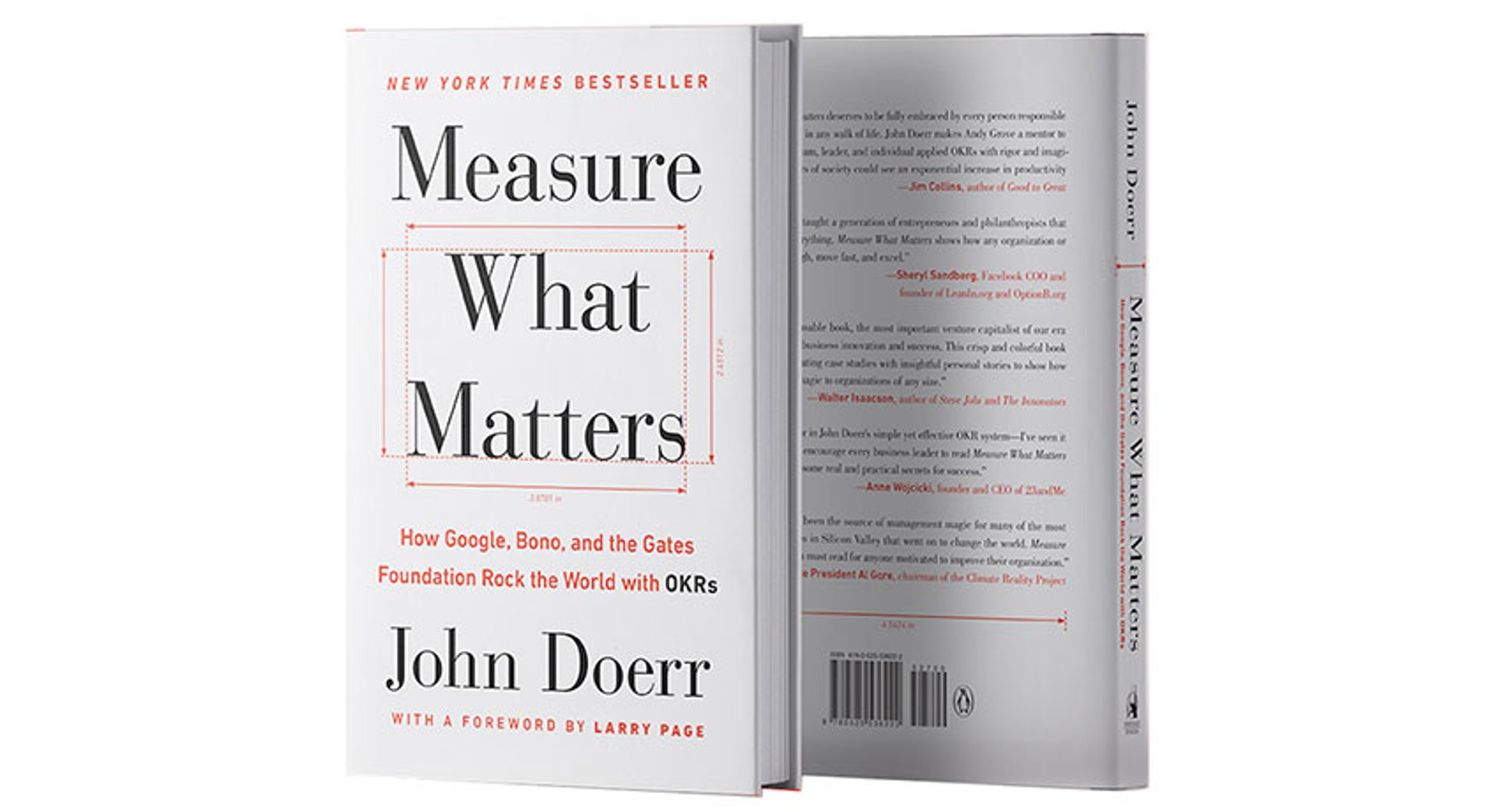
Published 2023-02-01
Summary - The book “Measure What Matters” moves how we measure performance up another notch by using Objectives and Key Results (OKRs). Doerr introduces concepts around measuring organizations in a precise and timely manner, which meet the requirements of today’s organizations and environment.
Implementing Objectives and Key Results
Credit to book author John Doerr. “Measuring What Matters” is a great book that moves how we measure performance up another notch by using Objectives and Key Results (OKRs). Doerr introduces concepts around measuring organizations in a precise and timely manner, which meet the requirements of today’s organizations and environment.
The missing part is how (in a simple, realistic, pragmatic, and proven way) to take your organizational goals and strategy and translate them into effective OKRs that will take your organization to a new level. Now, let’s talk about how you make that OKR magic work in your organization.
A short video of this article can be found be found by clicking here.
A quick blurb about OKRs
OKRs are the contemporary version of MBOs (Management by Objectives) that Peter Drucker coined in 1957 and the Balanced Scorecard that Drs. Kaplan and Norton presented in the late 80’s. They are the way that we can (finally) make “strategy everyone’s everyday job”.
The best example I can think of is navigating using a paper map (i.e. management practices of the 80’s) versus using Google Maps (managing with OKRs).
With a paper map you only get periodic progress checks – as you hit major benchmarks like intersections and landmarks (think of these as your quarterly performance meetings). You could be way off-track before these periodic checks catch your mistake, and it may take a lot of money and time to get back on track.
With Google Maps, you get real-time updates on where you are, meaning real-time warnings when you deviate from the route. You are also provided quick updates of alternate routes given your location, destination, and what is happening in-between.
OKRs are the Google Maps of your business journey. Near real-time views of how your organization is progressing, down to the most granular strategic level. You can see what part of your organization is humming and what part needs some support. Your team can see progress and refine operations on an ongoing basis.
There’s more to it than that, but you get the idea. Obviously, in the performance race, the organization employing Google Maps is more likely to get there first, at a lower cost, and with better results. What is not to like about faster, better, cheaper?
The Proven OKR System: Five Steps

- Capture Strategic Priorities
Every organization has a strategy – all you have to do is capture it.
- Assess Process & Project Linkage
The next step is translating strategy into action: finding the strategic performance nodes, meaning the spots where performance occurs.
- Set Objectives & Key Results
Armed with the critical performance nodes, strategy can be cascaded down to the team and individual level in a way that is exact, crisp, and clear.
- Agree Roles & Write OKRs
Setting OKRs is necessary, but not enough. In the organization, everyone needs to understand their responsibilities and how they contribute to making great things happen. Once roles are defined, crafting effective OKRs solidifies the agreements and becomes the foundation for success.
- Build Reporting Cycles & Launch
The pace of business isn’t what it used to be. It’s faster… way, way faster. Therefore, how you report (and react) to performance has to be way, way faster too. It’s time to pick up the pace of reporting, communicating, and doing.
Now comes the scary part; stop thinking and start doing. Launch and learn!
You’ve got what it takes, but you might not know it. Let’s do a quick check of the building blocks that you’ll need for your OKR solution. I bet you’ll find that either you already have them, or you can get them in a flash.
Use this OKR template checklist:
- We have a strategy (if you don’t know it, just ask management. They either have it documented, or in their heads)
- We can set priorities. With the right team in the room, we can set strategic priorities
- We understand what we do and how our processes and projects contribute to success
- We can figure out the key results that come from the great work we do
- We know who does what, or could figure it out
- We have regular (or periodic) organization performance meetings
See? Easy-peasy… Every organization has the building blocks, you just need to learn how to assemble them into an effective OKR solution.
Step 1: Capture Your Key Objectives
The trick here is to simplify that complicated strategy document into 7-10 key Strategic Objectives.
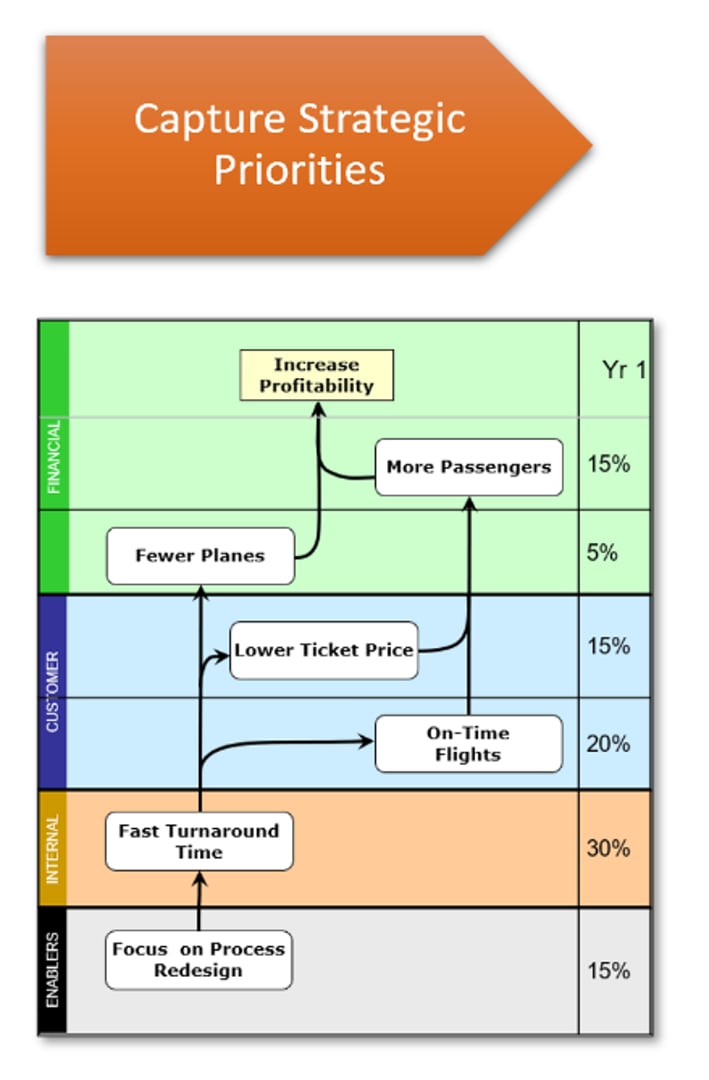
In case you don’t have the complicated strategy document – don’t despair. Your leadership team knows what the strategy is, you just have to help them articulate it. This is what I call a “two cups of coffee” problem. A short, casual conversation should tell you all you need to know.
We prefer to use a Strategy Map to capture and tell the strategy story, but there are other tools out there.
Once you have solidified your Strategic Objectives, you’ll need to prioritize them! Michael Porter, the famous Harvard University Strategy professor, once said “strategy is more about what you stop doing”. Strategy is all about priority setting – and it is the job of leadership to set those priorities and communicate them to the organization.
Step 2: Assess Process & Project Linkage
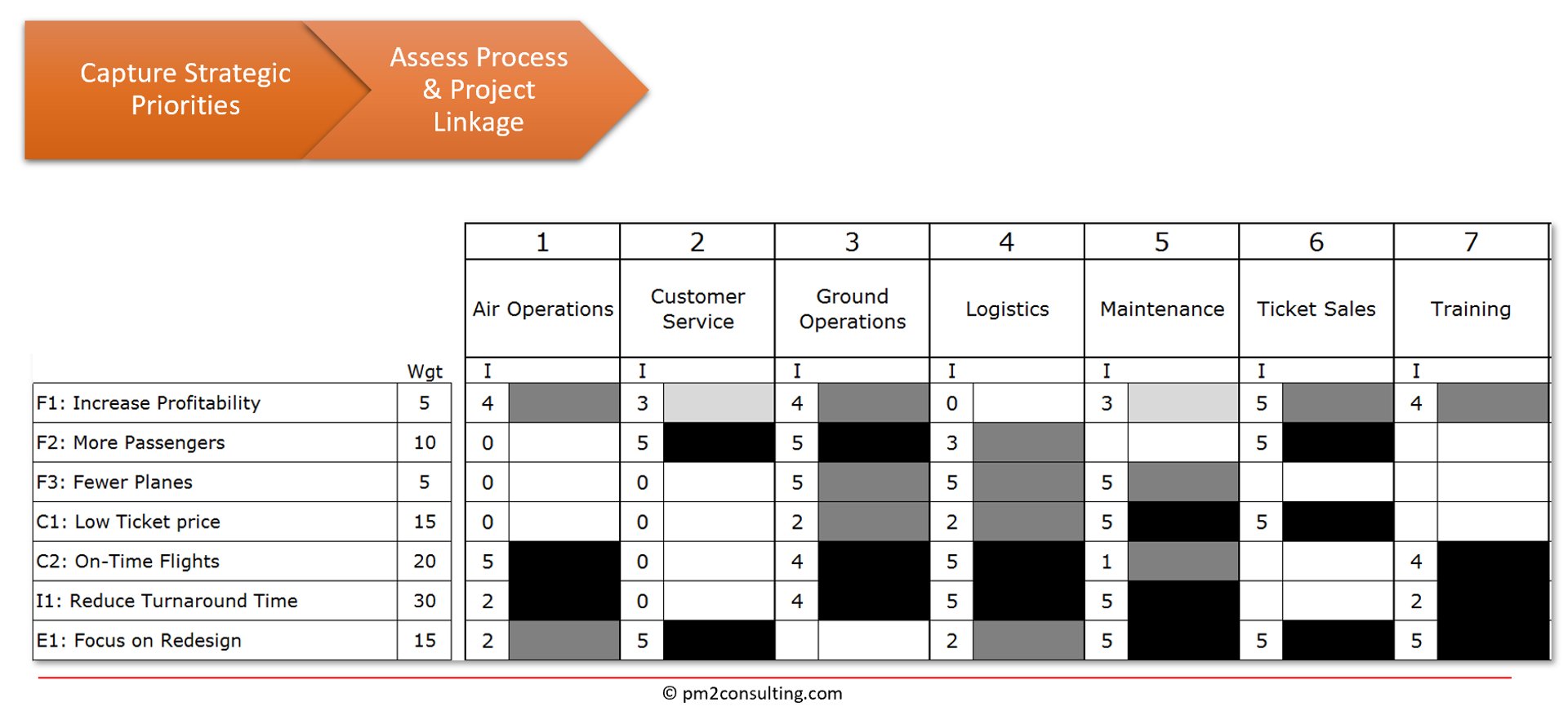
To achieve your organization’s strategy, the activities your and your team are involved in need to be in support of your Strategic Objectives. Activities that have a higher impact on your most highly weighted Strategic Objectives, by definition, become your critical performance nodes. These are the places where your OKRs must be the best defined.
We call this approach your Strategic Ontology, and you can watch a quick video on it here.
Step 3: Set Objectives and Key Results
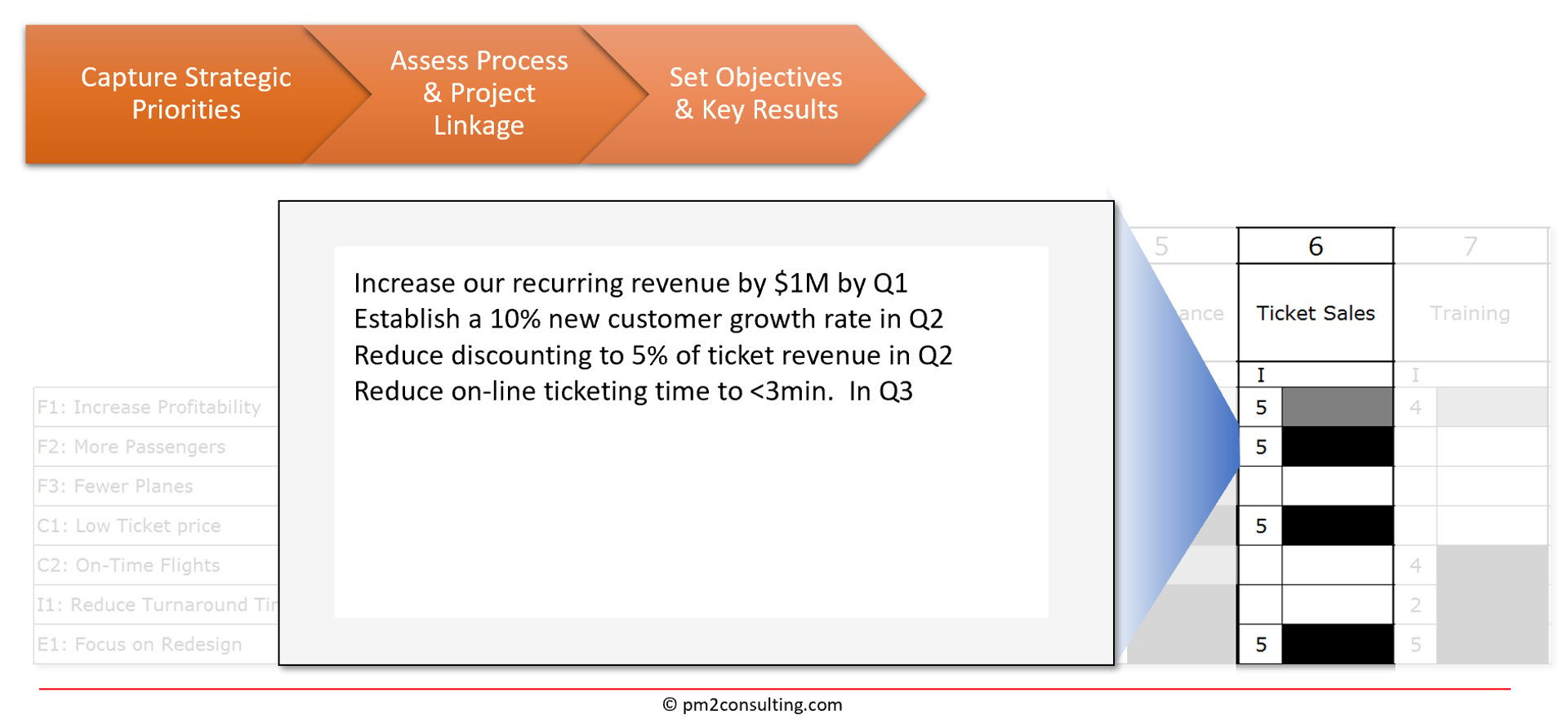
Now that you know your strategy and critical performance nodes, it is finally time to begin setting those department / process / team and individual (if you choose) OKRs. The formula is easy: . You will find that some OKRs require multiple Key Results.
Step 4: Agree on Roles and Write OKRs
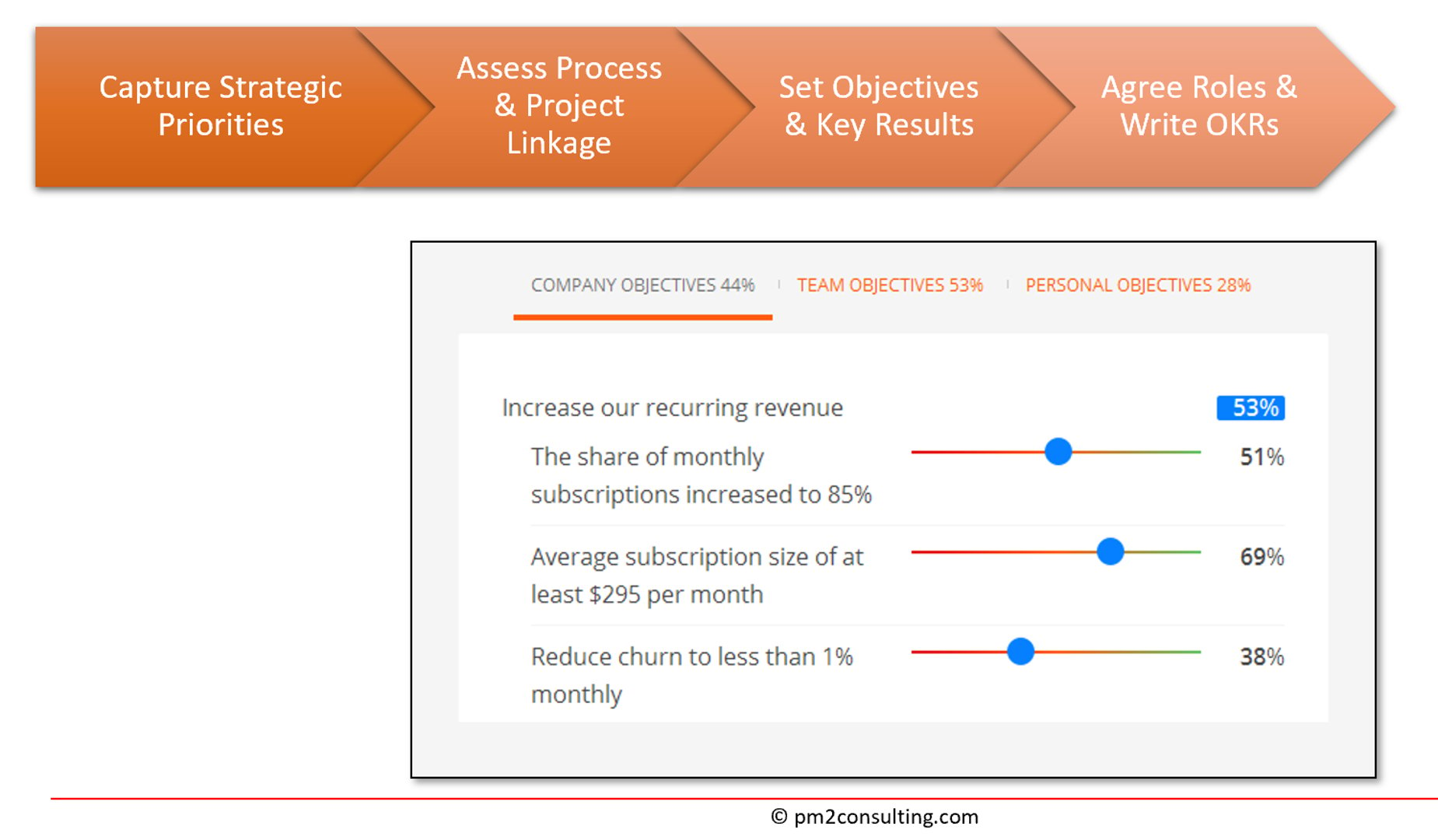
Now it’s down to the brass tacks – who does what. And beyond that, what is their role in making that happen? There are many frameworks out there – the most common (but not the best) is RACI. The magic here is in providing clarity on who owns that activity – this drops meeting times by about 25%, increases productivity and reduces conflict.
At this point you have created the “technical” side of OKRs. Every department/team/individual (depending how detailed you go) knows what they need to do, when they need to do it, and what their role is in making that happen.
Congratulations. You have now completed about 20% of your OKR solution. Now comes the tough part: the other 80%. The social structure behind enabling OKRs to drive performance.
Step 5: Building the Reporting Cycles…. & Launch!

You now need a risk-free environment where individuals and teams can visualize and discuss performance, collaborate to enhance what is working well, and jointly address areas where performance needs improvement.
This is similar to a sports team dynamic; every team member understands both their role and everyone else’s role on the team. There is complete visibility – and statistics – on how every line (team and individual) is performing.
There are coaches, managers, trainers, and support staff to help see and correct activities. There are ongoing conversations about performance before, after, and during the game (but before the next game) that everyone participates in. As sports players, feedback is welcomed. This is similar to the culture and process we need to incorporate into our organizations.
OKR goals launch!
It is time to turn on your OKR solution and learn by doing. Implementing an OKR solution into your operations is much like riding a bike – you have to actually use your OKR solution to make it work and see continuous improvement.
From my experience, it typically takes about three quarters to get up and running and realize serious results – but you’ll see huge benefits even after the first few weeks.
Stick to it!
About Pm2
Brett is an Executive Partner at Pm2 (Performance Measurement & Management) an international consulting firm specializing in the development and implementation of strategic dashboards and scorecards. The frameworks they use includes OKRs (Objective and Key Results), Balanced Scorecard, 4DX (Four Disciplines of Execution) Lean, Six-Sigma, etc. Their work has been profiled in Harvard Business Review, Fortune and Forbes magazines as well as countless business books and periodicals. We are pleased to have this thought leader as an active contributor to our blog posts.
Related Articles

Implementing OKRs, faster, cheaper, better – and easier
By Brett Knowles — December 9th, 2019
Are your 'Key Results' undermining your 'Objectives'?
By Brett Knowles — October 18th, 2019
The life-cycle of an OKR
By Brett Knowles — April 12th, 2019

